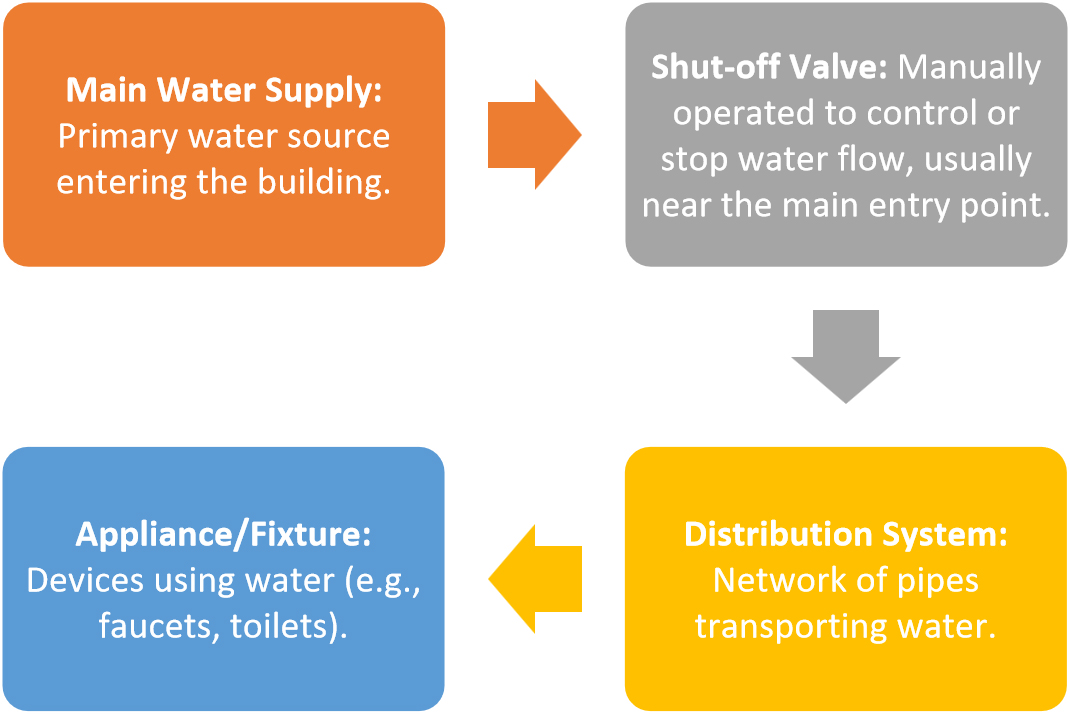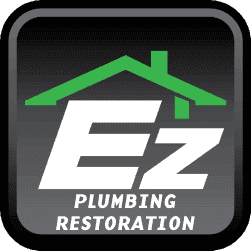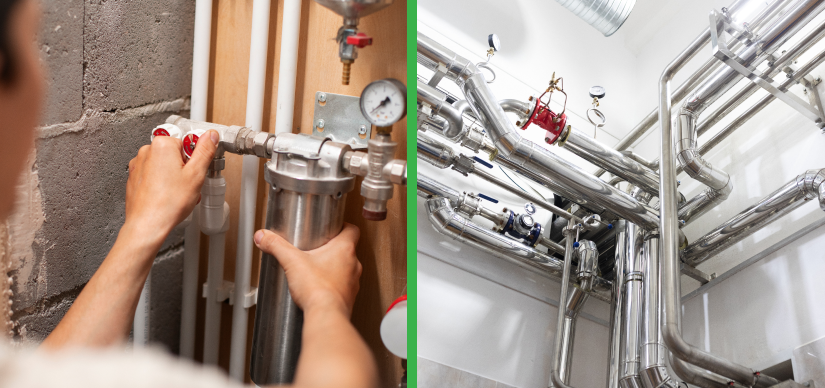Installation of Water Shut-Off Systems in San Diego
Installation of Water Shut-Off Systems in San Diego
Having a robust safety net is a proactive strategy, particularly in regions prone to water-related issues like San Diego, where leaks and floods can wreak havoc. So, overlooking this essential aspect of home safety should not be an option. Ensuring the safety of your home against water damage is paramount through the installation of water shut-off systems. This blog provides all the information relevant to the installation of the shut-off system, how to shut off water, the device, and other important information.
The Importance of Water Shut Off Installation
As an already known fact, water damage is a prevalent issue that causes significant financial losses and disrupts the comfort of your home. So, when you invest in a water shut-off system, you choose to protect your precious property from costly repairs and the impact of water emergencies and prevent devastating consequences.
One should also note that earthquakes and wildfires are common, which is why the presence of a water shut-off device becomes even more critical. These disasters can cause water pipe damage, leading to extensive flooding. A quick-acting shut-off system stops water flow in its tracks and its costly consequences.
Types of Water Shut-Off Systems
Several types of water shut off devices are available on the market, each designed to meet diverse needs and budgets. Here are some common types:
Whole-House Shut-Off Systems:
A whole-house shutoff system is your home’s water safety net that constantly monitors your water flow for any irregularities, such as sudden increases or decreases. These systems offer automated protection by rapidly stopping the water flow in the occurrence of a leak or other emergencies. Leveraging advanced technology to remotely control can help equip the whole-house shut-off system with a water shut off notice. This can help the residents prepare for the temporary loss of water service and take necessary precautions.
Individual Appliance Shut-Off Valves:
The individual appliance water shut-off is used for specific appliances such as washing machines and dishwashers by providing targeted control. If you see a water shut off sign, it usually indicates water service to that appliance. These valves give you the control to isolate and fix problems without impacting your entire household water supply. This targeted approach enhances efficiency and minimizes risks while also offering a localized solution to prevent potential damage caused by appliance malfunctions or leaks.
Smart Water Shut-Off Systems:
Smart water shut-off systems are an advanced technological approach providing a cutting-edge solution for modern homes in San Diego. Smart shutoff systems offer unparalleled leak detection with water shut off warning. This system ensures peace of mind through remote control and real-time monitoring via smartphone applications.
Water Shut-off System Installation Process in San Diego
A proactive approach requires time and effort for the installation of water shut-off systems that provide long-term benefits. In San Diego, where water-related issues pose significant risks, the installation of water shut-off systems is a crucial step to safeguard homes. This section covers the complete water shut off installation process while also considering the various aspects before the setup.
1. Selecting the Right System
Factors such as the size and layout of your property, the complexity of the water supply system, and your budget affect the selection process. An appropriate water shut-off system should be able to optimize functionality and enhance the overall water safety of your home. For complete protection, a whole-house shut-off system should be selected, whereas for control over specific appliances, individual shut-off valves are a better option. Smart shut-off systems are chosen to maximize convenience, offering the advantage of remote monitoring and control over distant components.
2. Gathering Necessary Tools and Materials
The necessary equipment for water shut-off system installation includes:
- Wrenches
- Pipe cutters
- Thread seal tape
Before starting the installation, it’s crucial to know the required tools and materials. A successful water shut-off system installation depends on the use of appropriate tools for a smooth and efficient process, ensuring reliability when needed. Preparedness and the right tools prevent unnecessary delays.
How to Shut Off Water Supply?
Know the Water Shut Off diagram to understand this process better. The diagram represents the components and procedures involved in shutting off the water supply to a specific system or area.

Water Shut off Checklist
- Turn off the main water valve.
- Open faucets to relieve pressure.
- Disconnect appliances.
- Drain water from pipes.
- Insulate exposed pipes.
- Shut off the water heater.
- Secure outdoor faucets.
- Inform household members.
- Check for leaks before leaving.
- Leave faucets slightly open for residual drainage.
Pro Tips:
- Emergency Preparedness: In the event of an emergency, shutting off the main water supply is crucial for safety. Plumbing repairs commence by turning off the valve.
- Valve Location: The main shut-off valve is typically situated near the water meter, often in the front of the house, either inside or outside the basement.
- Turning Off the Valve: Rotate the valve clockwise to stop the water supply; use a wrench if it’s stiff from disuse.
- Travel Preparation: Before leaving, ensure worry-free travel by turning off the main water valve.
- Regular maintenance: Check the valve regularly to ensure smooth functionality when needed. Plumbing systems may vary, so seek professional or local water utility guidance to avoid water shut off repair and further increasing the cost.
3. Installing Whole-House Shut-Off Systems
- For whole-house shut-off systems, identify the main water line entry point. Cut and install the shut-off valve as per the manufacturer’s instructions using a pipe cutter. Seal the connections with the plumber’s tape and tighten them firmly.
- Consult with a plumber for systems that may require professional installation. Post-installation, validate the system’s functionality by restoring the main water supply and confirming that the shut-off function works as intended.
4. Installing Individual Appliance Shut-Off Valves
- To install individual appliance shut-off valves, begin by shutting off the main water supply. Identify the appliance location, gather materials (compression-style valve, tubing, cutter, and wrench), and cut the water line.
- Connect the shut-off valve securely, test for leaks, and repeat the process for additional appliances if necessary.
5. Installing Smart Water Shut-Off Systems
- Select a smart water shut-off system by researching compatibility, features, and installation ease.
- Gather tools like a wrench, pipe cutter, and a smartphone/tablet.
- Turn off the main water supply, drain pipes by opening faucets, and replace the manual valve with the smart shut-off valve following water shut off instructions.
- Connect the system to Wi-Fi, download and set up the app, then perform a system test.
- Monitor and maintain the system through the app, update it regularly, and educate household members on its use and emergency protocols.
6. Post-Installation Checks and Maintenance
- Implementing a schedule for regular water shut off maintenance is important for the system to work efficiently. This includes checking software updates, especially for smart water shut-off systems.
- After installation, a comprehensive inspection is essential to check the proper functioning of the shut-off systems.
Conclusion
Water-related disasters are common in San Diego, which is why having a water shut-off system is important. Having these systems protects the property from water damage, and this system responds swiftly to potential leaks, which provides peace of mind, too. Developing an understanding of the water shut-off systems following the proper installation process and knowing how to shut off water can safeguard your San Diego homes so that the beauty of this place can be enjoyed without much worry.


